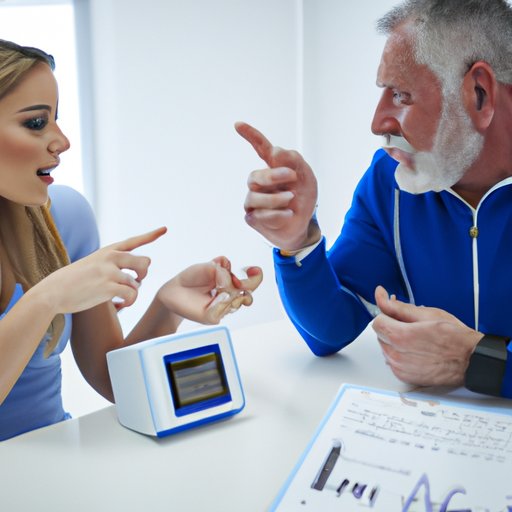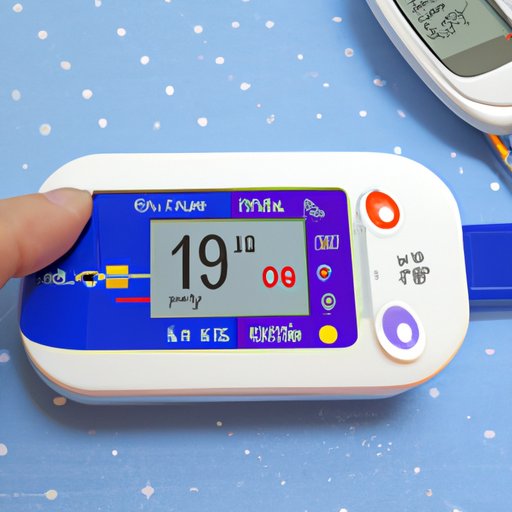Introduction
Pulse oximetry is a medical tool that is used to measure the amount of oxygen present in a patient’s blood. It is a non-invasive procedure that uses an electronic device to detect and display the oxygen level in the body. This technology has become increasingly important in the medical field due to its ability to provide accurate readings quickly and without the need for a blood sample. In this article, we will explore the technology behind pulse oximeters and how it works.

Explaining the Technology Behind Pulse Oximeters
A pulse oximeter is a device that measures the oxygen saturation level (SpO2) in the blood. It consists of two main components: a light source and a photodetector. The light source emits light of two different frequencies, red and infrared. The photodetector then measures the amount of light that passes through the patient’s skin and is absorbed by the hemoglobin molecule in the patient’s red blood cells. This information is then used to calculate the oxygen saturation level of the blood.
The process of measuring oxygen saturation levels is relatively simple. First, the device is placed on the patient’s finger or earlobe. It then emits the two different frequencies of light into the tissue. The light that is not absorbed by the hemoglobin molecules is reflected back to the photodetector. The photodetector measures the intensity of the reflected light and calculates the oxygen saturation level based on the intensity of the light.
Benefits of Using a Pulse Oximeter
Pulse oximetry has a number of benefits for both patients and medical personnel. For patients, it is a non-invasive procedure that can be completed quickly and accurately. It does not require a blood sample, which means that it is much less painful than other methods of measuring oxygen saturation levels. Additionally, it is easy to use and provides immediate results.
For medical personnel, pulse oximetry is a valuable tool. It can be used to monitor a patient’s oxygen saturation levels over time and help diagnose a variety of conditions. It can also be used to determine if a patient needs supplemental oxygen and to monitor the effects of treatments. Additionally, pulse oximetry can be used to detect changes in oxygen saturation levels that may indicate a problem with the respiratory system.
The accuracy of pulse oximetry measurements is also a major benefit. Studies have shown that pulse oximetry is accurate within 2-3% of the actual oxygen saturation level, making it a reliable and accurate measurement tool.
Conclusion
Pulse oximetry is an important tool in the medical field. It is a non-invasive procedure that can quickly and accurately measure the oxygen saturation level in the blood. It is a valuable tool for both patients and medical personnel, as it can be used to monitor oxygen saturation levels, diagnose a variety of conditions, and detect changes in oxygen saturation levels that may indicate a respiratory problem. Additionally, the accuracy of pulse oximetry measurements makes it a reliable and accurate measurement tool.
This article has provided an overview of how pulse oximetry works and the benefits of using a pulse oximeter. Further research is needed to fully understand the technology behind pulse oximeters and their potential applications in the medical field.
(Note: Is this article not meeting your expectations? Do you have knowledge or insights to share? Unlock new opportunities and expand your reach by joining our authors team. Click Registration to join us and share your expertise with our readers.)
